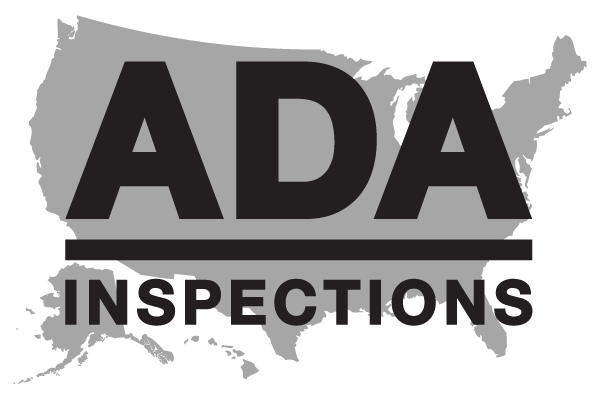Clear Floor or Ground Spaces as Defined by the ADA - Technical
This is article is about clear spaces in State and local government facilities, public accommodations, and commercial facilities, as defined by the Americans with Disabilities Act (ADA). The section of the 2010 ADA Standards that covers clear spaces is 305. However, the term “clear floor or ground space(s)” is mentioned 78 times in the 2010 ADA Standards. Clear spaces are required at the following elements.
Operable parts like wall switches, outlets, dispensers
Drinking fountains
Lavatories and sinks
Counters
Dining/work surfaces
Urinals
Sales & service counters
Beds
ATM Machines
Landline Telephones
Most appliances, such as ranges, refrigerators, washers and dryers
2010 ADA Standard 305.3, [Floor or Ground Space] Size, states, “The clear floor or ground space shall be 30 inches (760 mm) minimum by 48 inches (1220 mm) minimum.” This Standard applies to clear spaces that are not confined in any direction. The graphic below is representative of this Standard.
Clear Floor or Ground Space
Note that although not specifically covered in the ADA Standards, a door swing arc should not overlap with a clear space at an element. When the door is operated, the door could be in the clear space and violate the intent of the clear space.
2010 ADA Standard 305.2, Floor or Ground Surfaces, states, “Floor or ground surfaces of a clear floor or ground space shall comply with [Standard] 302. Changes in level are not permitted. EXCEPTION: Slopes not steeper than 1:48 shall be permitted.” In other words, clear spaces should have very little slope. Mostly flat. A slope of 1:48 is only 2.08%, which is just enough to drain water off.
2010 ADA Standard 305.4, [Clear Floor or Ground Space] Knee and Toe Clearance, states, “Unless otherwise specified, clear floor or ground space shall be permitted to include knee and toe clearance complying with [Standard] 306.” In other words, the knee and toe space required by some elements, such as a sink or dining table, can overlap a clear space for the element. The diagram below is representative for a sink.
Clear Space at a Sink
Clear Space for Forward Approach
2010 ADA Standard 305.5 [Clear Floor or Ground Space] Position, states, “Unless otherwise specified, clear floor or ground space shall be positioned for either forward or parallel approach to an element.” The graphic on the right is representative of a forward approach to an element.
Clear Space for Parallel Approach
The graphic on the left is representative of a side, or parallel, approach to an element.
2010 ADA Standard 305.6, [Clear Floor or Ground Space] Approach, states, “One full unobstructed side of the clear floor or ground space shall adjoin an accessible route or adjoin another clear floor or ground space.” The graphic below is representative of an accessible route joining several clear spaces, as well as doors and elevators.
Accessible Route Joins Several Elements and Clear Spaces
Centering of the clear floor or ground space is required at only certain elements such as drinking fountains, kitchen work surfaces, and washers and dryers. For example, 2010 ADA Standard 602.2, [Drinking Fountains] Clear Floor Space, states, “Units shall have a clear floor or ground space complying with [Standard] 305 positioned for a forward approach and centered on the unit. Knee and toe clearance complying with [Standard] 306 shall be provided.” The graphic below is representative of a clear space centered (almost) on an element.
Centered Clear Space Forward Approach
Clear floor spaces that are confined, such as in an alcove, have different size requirements, where the clear space is confined on 3 sides and more than half of the clear space depth is confined. The graphic below is representative.
Confined Clear Spaces
2010 ADA Standard 305.7, [Clear Floor or Ground Space] Maneuvering Clearance, states, “Where a clear floor or ground space is located in an alcove or otherwise confined on all or part of three sides, additional maneuvering clearance shall be provided in accordance with [Standard] 305.7.1 and [Standard] 305.7.2.” In this Standard the difference is with the approach, forward or parallel.
2010 ADA Standard 305.7.2, [Clear Floor or Ground Space, Maneuvering Clearance] Parallel Approach, states, “Alcoves shall be 60 inches (1525 mm) wide minimum where the depth exceeds 15 inches (380 mm).” The graphic below is a clear space for a parallel approach to an alcove.
Parallel Approach to Alcove
The additional space for the parallel approach shown above is necessary for disabled individuals to maneuver into and out of the space, as shown in the graphic below.
Maneuvering into an Alcove Using Side Approach
2010 ADA Standard 305.7.1 [Clear Floor or Ground Space, Maneuvering Clearance] Forward Approach, states, “Alcoves shall be 36 inches (915 mm) wide minimum where the depth exceeds 24 inches (610 mm).” The graphic below is representative of a forward approach to a counter that has a recessed accessible area below the counter and obstructions on both sides of the clear space that are greater than 24 inches in depth.
Forward Approach to Confined Clear Space (Alcove)











